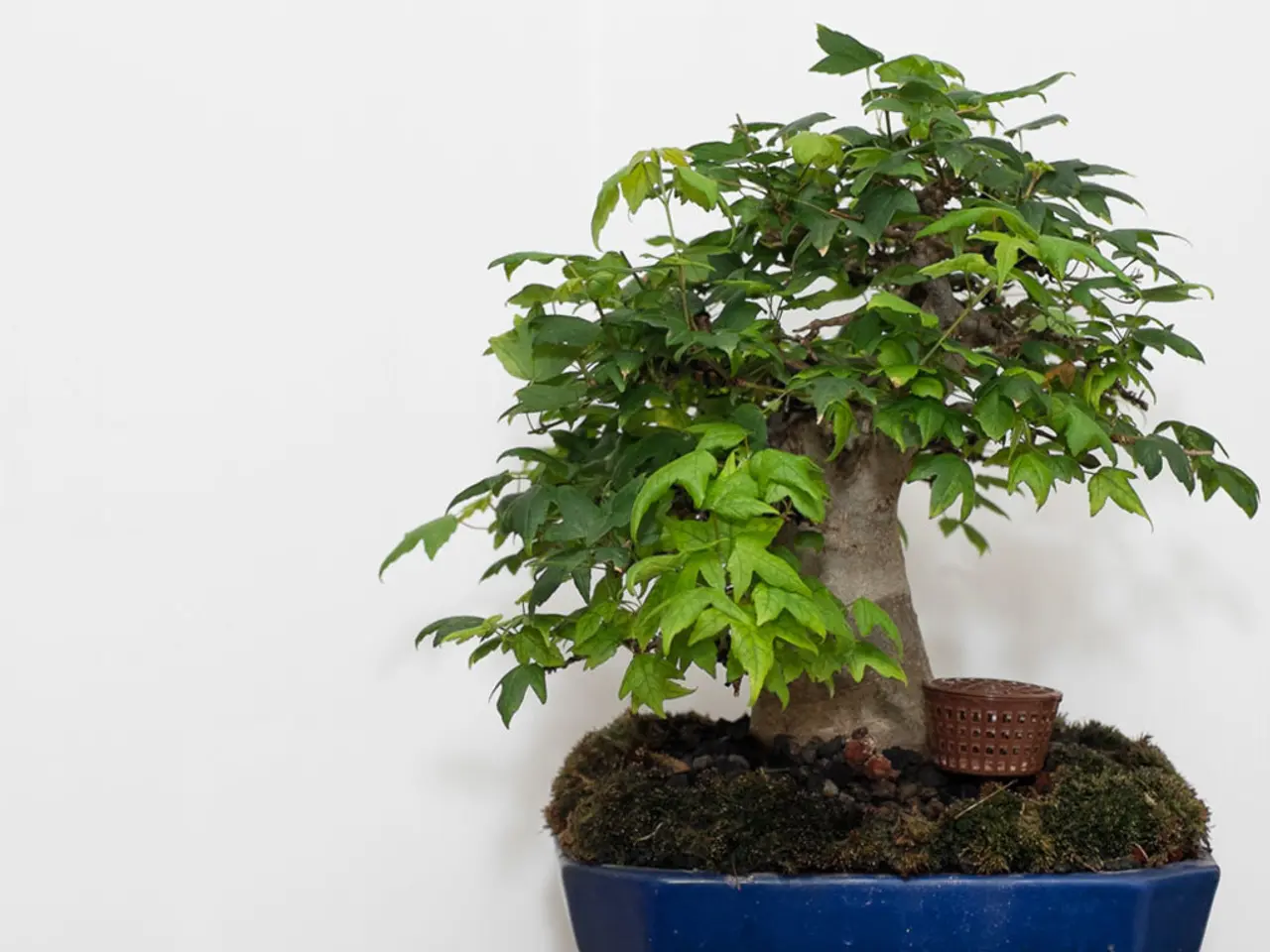Mastering the Craft of Ficus Bonsai: Exclusive Styling and Maintenance Methods
In the world of bonsai, the Ficus species stands out for its versatility and beauty. With the right care and attention, you can coax a Ficus into a breathtaking work of art. Here's a guide to help you get started.
Choosing the Right Ficus Bonsai
When selecting a trunk, consider factors such as straightness and taper, thickness and girth, branching structure, and surface character. A well-chosen trunk provides a solid base for the artistic expression of your Ficus Bonsai.
Growing from Seed or Cutting
Growing a Ficus bonsai from seed is a viable option, but it requires patience and dedication, as it can take several years for the tree to mature. Alternatively, Ficus enthusiasts can effectively propagate new trees from cuttings, leveraging the species' inherent ability to root adventitiously from stem sections.
Caring for Your Ficus Bonsai
Lighting
Ficus bonsai thrive in warm, well-lit environments without harsh direct sunlight. Provide bright, indirect light if kept indoors.
Watering
Water when the topsoil feels dry but keep soil evenly moist; avoid letting it dry out completely or become waterlogged to prevent root issues.
Pruning
Regularly prune to maintain shape and encourage healthy growth. For Ficus, pruning requires care to maintain health; defoliation (removing leaves) can help promote ramification (branching) but should be done cautiously.
Wiring
Ficus branches are flexible and can be wired to shape, but wire must be checked every 2-3 weeks to avoid cutting into fast-thickening branches, as Ficus wood fatten quickly.
Fertilizing
Use a general bonsai fertilizer at moderate levels. Regular houseplant fertilizers are adequate, especially for beginners. Do not overcomplicate feeding.
Repotting
Repot every 1-2 years to refresh soil and prune roots, promoting healthy root systems and vigor in growth.
Pest Control & Weed Management
Remove any weeds from the potting soil promptly. Ficus cuttings root easily if you collect them, so propagation is feasible.
Styling
Use branch bending and pruning in combination to create dynamic, natural-looking shapes. After pruning, wiring lets you position branches artistically but requires vigilance to avoid damage.
Encouraging Aerial Roots
Aerial roots create a sense of drama and elegance, as if the tree is defying gravity. To encourage the growth of aerial roots, Ficus enthusiasts can create a humid microclimate or regularly mist the tree.
Overcoming Challenges
Vigilance is essential in Ficus Bonsai care, as these trees are susceptible to various pests and diseases that can compromise their health and aesthetics if left unchecked. Common pests affecting Ficus include spider mites, mealybugs, and scale, which can be treated with insecticidal soap or neem oil. Fungal diseases like root rot and leaf spot can be prevented by maintaining good air circulation, avoiding overwatering, and providing adequate light. Bacterial diseases, such as crown gall, can be managed by pruning infected areas and applying copper-based bactericides.
Styling for Success
The key to successful wiring lies in striking a balance between control and subtlety. With patience and dedication, you can tap the full potential of your Ficus, crafting a living work of art that embodies balance and harmony, proportion and scale, contrast and texture, and negative space.
In summary, key points for Ficus bonsai care and styling are:
| Aspect | Technique | |----------------|---------------------------------------------------------------------------| | Lighting | Bright, indirect light indoors | | Watering | Water when topsoil is dry; keep soil moist but not soggy | | Pruning | Regular trimming and selective defoliation to enhance ramification | | Wiring | Flexible wiring; monitor every 2-3 weeks to avoid wire damage | | Fertilizing | Use standard bonsai fertilizer; avoid overfeeding | | Repotting | Every 1-2 years with root pruning | | Pest/Weeds | Remove weeds; check for pests | | Styling | Combine pruning and wiring for branch shaping; maintain tree health |
Following these tailored practices will optimize Ficus bonsai growth and enable creation of elegant, artistic bonsai trees. With wiring techniques, when applied thoughtfully, you can coax even the most reluctant Ficus into breathtaking works of art. So, with patience and dedication, you can craft a living work of art that will bring beauty and tranquility to your home.
Incorporate home-and-garden elements into your Ficus Bonsai care routine by creating a humid microclimate or regularly misting the tree to encourage aerial roots, adding a touch of drama and elegance to your home-and-garden scene.
By cultivating a lifestyle that includes the art of gardening and bonsai, you can engage in the process of transforming a Ficus Bonsai into a breathtaking work of art, enhancing the beauty of your home-and-garden environment.




